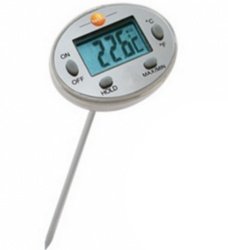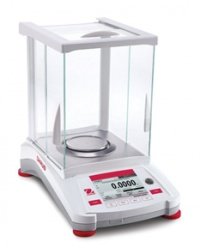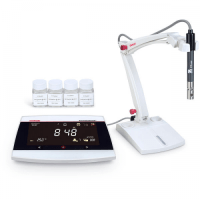How to Check Your Kitchen Thermometer Is Working Correctly

An inaccurate thermometer is as good as no thermometer at all. To ensure your kitchen thermometer is performing to its listed specifications, our scientists have documented a quick, low cost and effective way to check the accuracy of your thermometer using readily available items.
How to Check the Accuracy of Your Thermometer
It is surprisingly easy to know whether you can trust your thermometer’s readings. An ice slurry test is the most popular quick-check method because your slurry temperature will be 0°C (using pure water at standard atmospheric pressure).
When to Check Your Thermometer
1. New Thermometers: An ice slurry test is a great way to test the accuracy of new thermometers straight out of the box.
2. Routinely: Set a thermometer check schedule to maintain the performance of your thermometer over time. A daily or weekly routine is recommended if you use your thermometer frequently. Monthly or annual checks are adequate if you operate your sensor occasionally.
3. After Knocks and Drops: No one is perfect – to be safe, our scientists recommend checking your thermometer using a slurry test after any significant knock or drop.
How Accurate Should My Thermometer Be?
Most thermometers will display their instrument specifications on the packaging – this will outline the expected accuracy ± a set amount. Most devices are accurate within ±1°C.
How to Check Your Kitchen Thermometer
Video 1: In this video, an Instrument Choice Scientist demonstrates how to check the accuracy of your thermometer using an ice slurry.
Equipment
To make an ice slurry, you will need:
1. A large glass or container
2. Chilled water (distilled is ideal, tap is acceptable)
3. Ice cubes
4. A utensil to stir the slurry; and
5. Your thermometer.
Method
1. Fill the container with ice until it is half full.
2. Add the chilled water until it is almost level with the ice.
3. Leave the mixture for two minutes.
4. Stir the mixture for 10-seconds.
5. Place the thermometer probe into the ice slurry and leave it for 5-10 minutes to stabilise the reading. (Hint: this time will depend on your thermometer’s response rate).
6. After 5-10 minutes has elapsed, check the thermometer probe - readings should be 0.0°C or within the specifications outlined in your thermometer’s specifications.
7. If your thermometer is within specifications – it is ready for use!
What if Your Kitchen Thermometer Is Not Within Specifications
If you perform the ice slurry test and you still think your thermometer is not accurate, there are three possible remedies:
1. Calibrate: Some probe thermometers - can be calibrated. Follow the product user guide to learn how to perform a calibration.
2. Record: You should record the difference if your thermometer does not have a calibration feature and the reading is not 0.0°C but still within a reasonable range. This temperature deviation can be used as a correction factor for future readings. Our scientists recommend writing the known difference on a sticker and sticking it to the back of your thermometer.
3. Contact us: If you’re still unsure of the accuracy of your digital thermometer, contact us! Our scientists are always ready to help troubleshoot any issues to ensure your thermometer is working as it should be!
The Final Word
Using an ice slurry to check the calibration of your digital thermometer is a sure-fire, cheap and effective way to ensure your kitchen thermometer is performing accurately. Proceed with confidence and Bon Appetite!
Need a hand performing an ice slurry calibration? Speak with an Instrument Choice Scientist: Call 1300 737 871 or email [email protected].
Also interesting
Three main types of digital balances are used for many similar scientific tasks, and selecting the right device for your application can be time-consuming. However, knowing the technical and practical differences between digital balance styles will simplify your task. For this reason, Instrument Choice Scientists have created an article that clearly defines and efficiently unpacks the key issues.
Read on for our scientists' exclusive guide to weighing balances

At Instrument Choice, we proudly stock over 150 brands of scientific instruments and laboratory equipment. Our mission is to provide our customers with the broadest selection of scientific instruments, all in one place, so you can measure anything and measure everything.
To help you find the best products to suit your application, Instrument Choice Scientists regularly spotlight new products we’ve added to our store so you have a better idea of what’s on offer.
This edition features the brand new range of AquaSearcher Benchtop Meters by OHaus, a series of modern laboratory benchtop meters that excel at putting the users’ experience first.
To learn about the NEW AquaSearcher series of Benchtop Meters - click here

